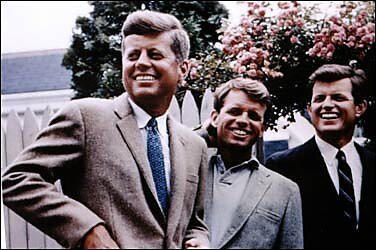
Patrick G. Eddington
It’s rare for a sitting federal chief executive to unilaterally order a mass declassification of historical records. Yesterday, President Trump did exactly that via an executive order (EO) directing his acting attorney general and Office of the Director of National Intelligence (ODNI) to work with senior members of his White House staff to come up with a plan and complete a review of the remaining unreleased records on the assassinations of President Kennedy, his brother, former Attorney General Robert F. Kennedy, and Dr. Martin Luther King, Jr.
The plan for executing the declassification action is to be on Trump’s desk no later than 45 days from the promulgation of the EO, which would be March 9. Trump’s interest in this issue is clearly tied to the desires of Robert F. Kennedy, Jr., Trump’s nominee to head the Department of Health and Human Services, to see the records released.
As the Washington Times’s Jeff Mordock and Susan Ferrechio noted in their coverage of the announcement, “Mr. Kennedy has long demanded that the files be released on the deaths of his uncle, his father, and King. He believes the government may be connected to all of their deaths.”
By “connected,” Kennedy is insinuating US government officials were somehow responsible for the deaths in some fashion, a popular conspiracy theory for decades.
Besides his personal and political interest in making the records public is the unusual way Trump is going about it.
Records as old as the ones subject to his EO are almost certainly in the custody of the National Archives (NARA), and normally it would be NARA officials who would be responsible for the review and release of the records in question. Thus far, administration officials have offered no explanation for this significant—and, in my view, troubling—deviation from past, accepted practice.
Will this action result in a selective release of information designed to bolster long-held conspiracy theories about the Kennedy assassinations? Unless every single record of the cases and investigations in question is released in full, the public will be no closer to getting answers about what really happened.
Almost six years ago, I wrote a piece for The Hill in which I not only talked about NARA’s refusal to release the remaining MLK, Jr. historical records to Cato (not just the assassination records but the FBI’s remaining surveillance records on King), but also the bureaucratic mindset that causes federal records that are decades old to remain beyond public reach.
I’m glad Trump has taken executive action on the records involving the Kennedy brothers and Dr. King, but he can and should go vastly further when it comes to historical record declassification.
He should start by issuing a follow-up EO ordering the immediate, full release (i.e., zero redactions) of all federal records 25 or more years old, with the only carve-outs being for information on confidential sources that are still living or cryptologic systems still in use by countries of interest to the American intelligence community.
Under a standing EO—EO 13526, Section 3.3, to be precise—automatic declassification of records is supposed to take place when the record becomes 25 years old. The reality is that this simply doesn’t happen—and often what’s required in the case of FBI records is that redactions made pursuant to law enforcement exemptions allowed under the Freedom of Information Act (FOIA) are not reviewed at the same time—meaning that critical information about why a person or organization was targeted in the first place remains hidden.
Trump could change all of this with the stroke of his pen, and he should. The true, currently classified and hidden history of the United States should be revealed in full. The question is, will Trump do it?







